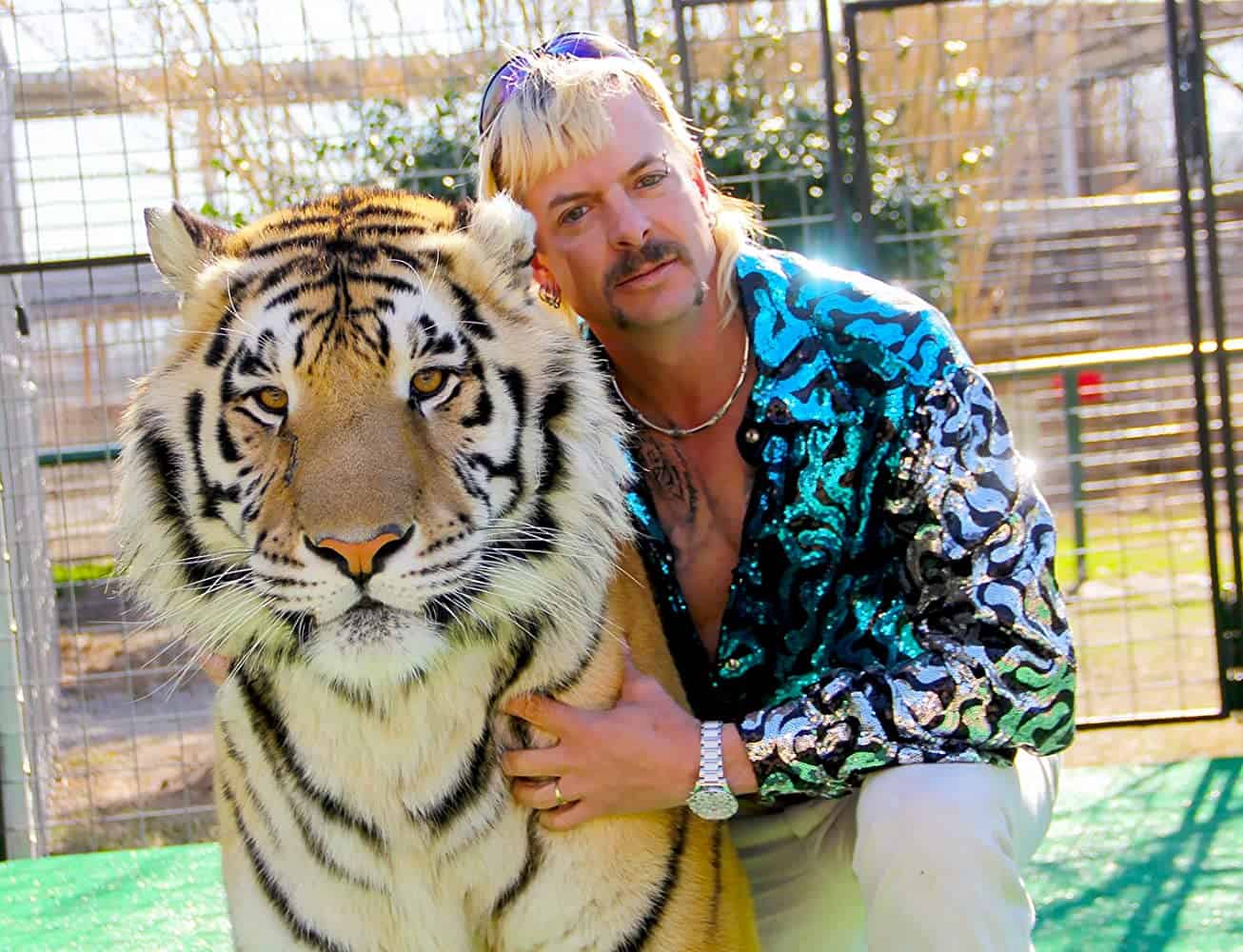Warning: This article contains spoilers
“ [Jesus] was in the wilderness with the wild beasts.”-Mark 1:13
Tiger King, Netflix’s docu-series about the life and crimes of former zoo operator Joe Exotic, has achieved mass appeal to the surprise of many. Perhaps the COVID-19 pandemic has triggered a need for distraction from the uncertainty plaguing our lives. Yet, I think that the Tiger King and our current crisis both raise an essential question: What is our humanity capable of? It’s an inquiry that can’t be raised by an isolated individual; we have to explore how we relate to each other and the rest of creation. On this strangest of Easters, we are invited especially to contemplate our human condition in the light of the risen Christ.
Tiger King describes Joe Exotic’s initial intentions as therapeutic both for himself and the animals. In his telling of the story, he adopted two abandoned tigers after a failed suicide attempt stemming from his family’s rejection of his homosexual orientation. In caring for fellow forsaken creatures, he recovered a sense of dignity.
Unfortunately, the story did not end there. Over the course of the series, we see how Joe’s passion for animals devolves into profiteering and abuse. He breeds and sells tigers, charging exorbitant fees to a complicit public eager for photos with cubs. His relationships with other human beings also become distorted under the lures of fame and wealth. To satisfy his desires for human connection, he entraps troubled young men in a drug-fueled fantasy world. Eventually, his hatred of an animal-rights activist erupts into a plan to hire someone to kill her. When the would-be assassin confesses to the police, the fantasy collapses and Joe has to face the consequences of his actions.
The fall and rise of Joe Exotic, told through his relationship with his tigers, echo the story of Adam, the first human. One version of the Genesis account tells us that God created the animals before Adam. Yet, Adam lived in such harmony with them that he gave the animals their names, seeing each being for what it truly was. After sinning against God, Adam’s relationship with all other things becomes fractured. He and Eve leave Eden clad in garments of skin. Bloodshed and distortion mark their departure from paradise.
Yet, the story does not end here. An icon displays what we know by faith. Jesus enters into our chaos and embraces Adam, Eve, and us, in our misery. Gospel details When we see Christ in the wilderness with the wild animals, Christ praying and weeping in the garden of Gethsemane and Christ being crucified in Golgotha (the burial place of Adam’s skull according to St. John Chrystostom), we see a restoration. Somewhere between the wild beasts and the angels, suspended between heaven and earth, he shows us what it is to be a full human being. He conquers death by dying and rising from the grave. When he breathes a gentle forgiving breath upon friends who abandoned him in his greatest hour of need, he provides the possibility of reconciliation.
This is a reconciliation that extends to all creation. We see glimpses of it in the lives of the saints. A motif in hagiography is that saints come to such union with Christ that even feral beasts obey them. Think of St. Francis of Assisi’s successful plea to the rapacious wolf of Gubbio to stop harassing townsfolk or of St. Seraphim of Sarov amazing visitors with his gentle treatment of a bear.
I think that our fascination with animals, wild and tame, is a hint of the desire for reconciliation with created reality. The wildness of nature can signify our own self-destructive tendencies. We know that our own union with God is incomplete and that we each have a journey of conversion to undertake. A show like Tiger King can elicit disgust and repulsion towards Joe Exotic. Yet, could it also be that we fear what is inside of ourselves? Desert father and spiritual writer, Pseudo-Macarius of Egypt, suggests that the greatest ferocity is not external, but internal:
“The heart itself is but a small vessel, yet there also are dragons and there are lions; there are poisonous beasts and all the treasures of evil. And there are rough and uneven roads; there are precipices. But there is also God, the angels, the life and the kingdom…the treasures of grace—there are all things.”
All things are indeed in our hearts. We’re all somewhere between Adam in the pits and the risen Jesus. We know the dragons of violence and selfishness and the gentle doves of generosity and service. Sometimes villains, sometimes heroes. Are we forever stuck in this ambiguity? No, the good news of Easter, the gospel of the risen Christ is that he reaches towards us in our condition. He enters into our hells and offers us his hand. St. Ignatius asks us to pray to come to a deeper understanding of this joy and to see everything in our lives, the lights and the shadows, as moving us towards God.
As we interiorize this proposal, we cannot help but realize that we are drawn into an ever-deepening communion with the rest of the created reality. We embrace all as our Saviour embraces us. We may not tame tigers, but we ask to be in right relationship with all things. We can realize that we are all here together and must be saved together.
St. Silouan the Athonite captures this notion best in his simple but challenging reminder, “my brother is my life.” While I’m not sure of the shape and hue of Joe Exotic’s redemption, I know that I am called to pray for him. I can learn greater respect for creation and humbly admit that I am just as easily tempted to let myself be deluded by egoistic fantasies.
In this Easter season, what good do you see in the light of the risen Christ? Where is His spirit of reconciliation at work?


